Hydropower Emulation Platform
NLR researchers are developing a controlled lab environment for hydropower-specific multitechnology evaluation.
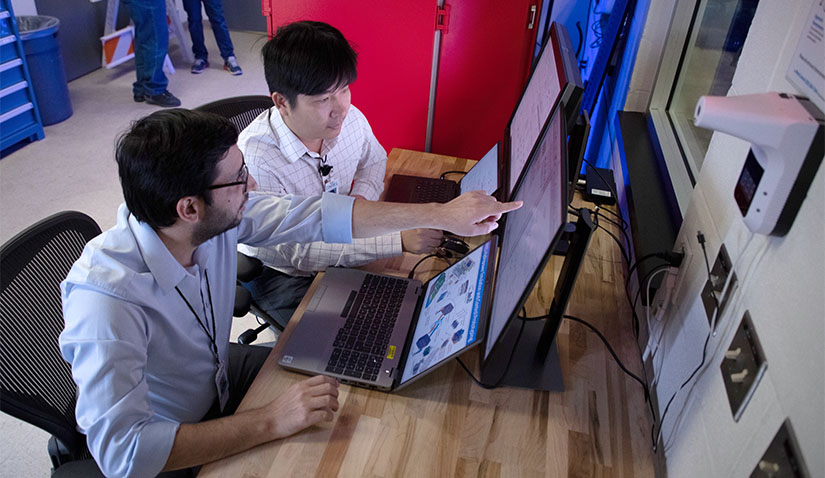
NLR researchers Mayank Panwar and Bang Nguyen look at the Real-Time Hydropower Emulation Platform, which uses the ARIES platform. At the core of the platform is the ARIES digital, real-time simulation setup, which is one of the largest in the U.S. Department of Energy lab complex. It is used for control prototyping, evaluating, and validating existing and novel hydropower technologies in a real-time environment using a hardware-in-the-loop approach. Photo by Joe DelNero, National Laboratory of the Rockies
Field validation for new and emerging hydropower technologies is risky, expensive, and time-consuming. However, when industry and NLR researchers use a unique, at-scale laboratory environment, users can develop and validate next-generation controls for hydropower applications under various grid conditions before they are ever connected to the grid. This provides risk-reduced pathways for evaluating technology deployment options. Additionally, users can evaluate upcoming technologies that have potential to address hydropower's integration and operational challenges in a vendor-neutral way while using the at-scale environment of NLR's Advanced Research on Integrated Energy Systems (ARIES).
Advanced Research on Integrated Energy Systems Real-Time Hydropower Emulation Platform
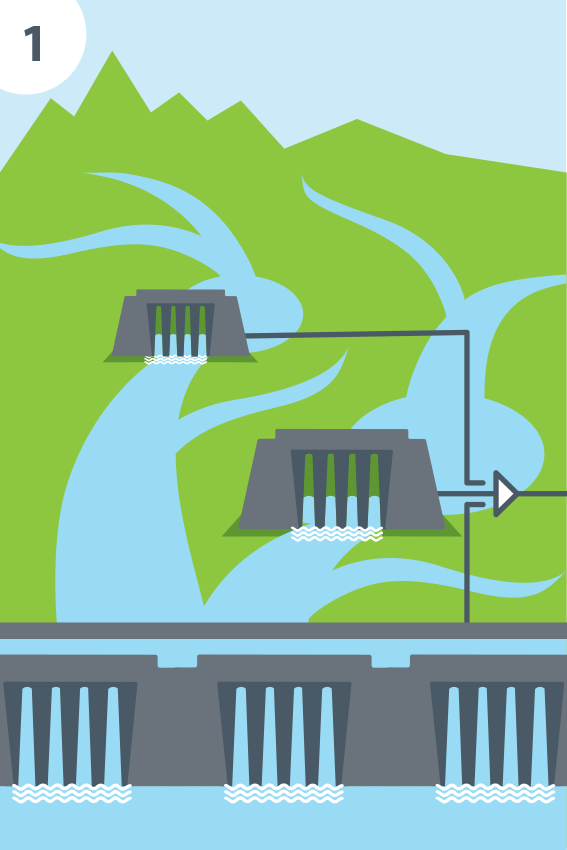
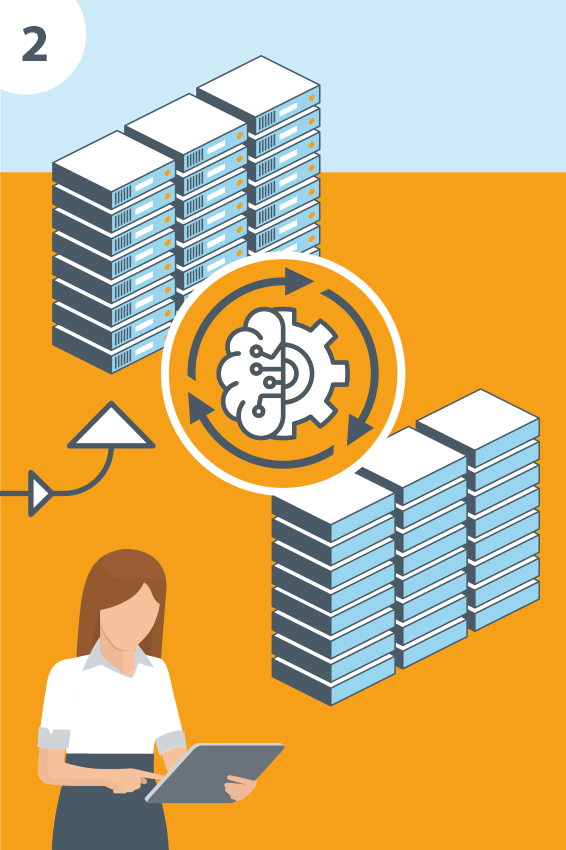
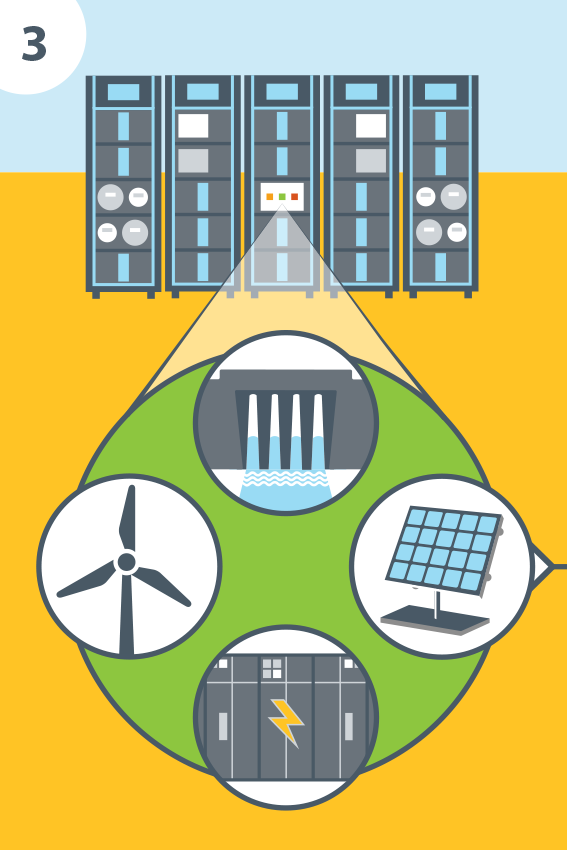
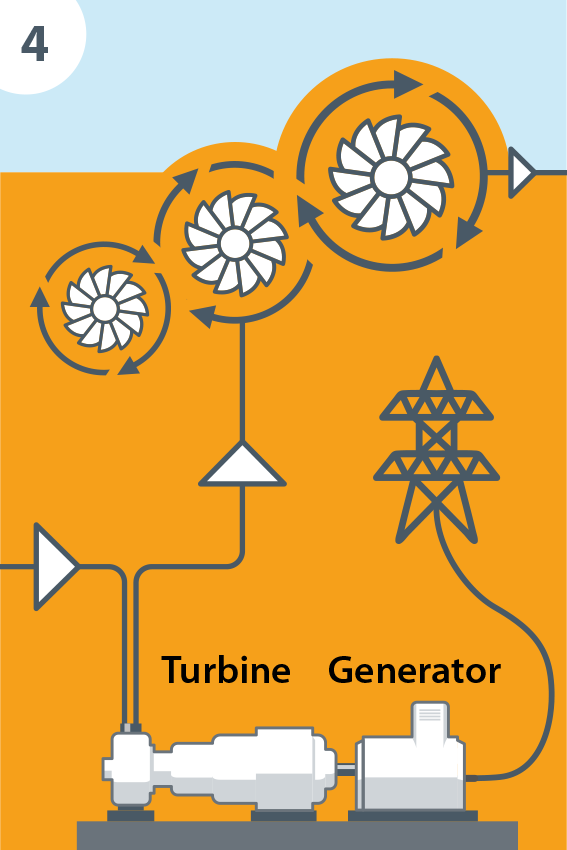
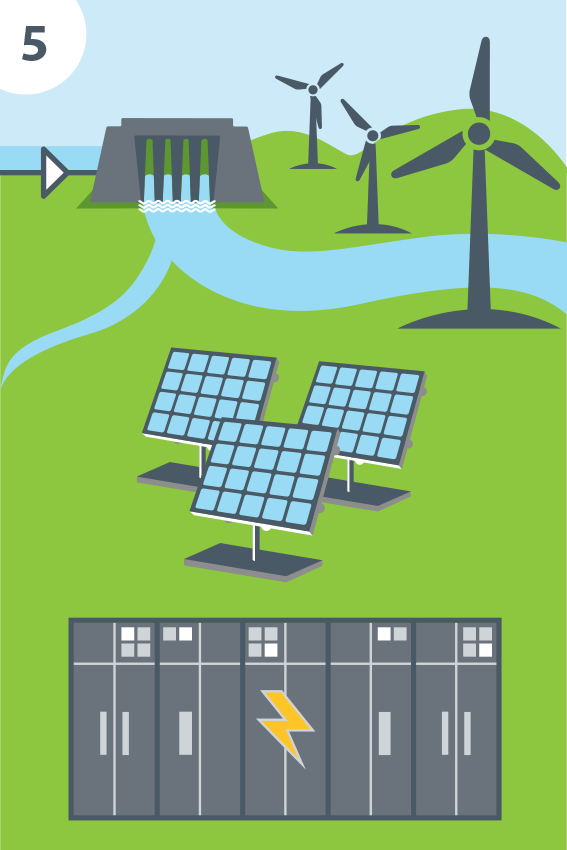
Hydropower emulation using NLR's ARIES platform uses actual hydropower data, megawatt-level hardware, and large-scale digital real-time simulation for prototyping controls and evaluating hydropower-specific technology. Illustration by Tara Smith, National Laboratory of the Rockies
The Rapid Prototyping of Next-generation Hydro-controls (Hydro Emulation) project leverages NLR's ARIES platform, emulating hydropower in a controlled, real-world environment, from which NLR researchers will develop a controlled lab environment for hydropower-specific multitechnology evaluation.
This controlled lab environment, the Real-Time Hydropower Emulation Platform (RTHEP), is being developed at NLR's Flatirons Campus through the U.S. Department of Energy Water Power Technologies Office's Water Innovation for a Resilient Electricity System (HydroWIRES) Initiative. It will de-risk and prototype controls to interconnect hydropower technologies by emulating hydropower with actual hydropower plant data and control and power hardware-in-the-loop approaches.
Through a previously funded Water Power Technologies Office project, NLR researchers established data connectivity to collect operations data from actual hydropower plants and used a physics-informed machine learning approach to emulate hydropower plants, including turbine dynamics and hydrodynamics, in real time. RTHEP will expand this to megawatt scales with physics-informed, machine learning-based, nonlinear scalability to emulate the dynamic behavior of different hydropower designs and configurations.
This project uses the ARIES platform's digital real-time simulation, actual hardware grid controllers, digital governors, variable-speed hydropower emulation, and power electronic interfaces as well as energy storage and conversion technologies, such as batteries and hydrogen electrolyzers.
Capabilities
The megawatt-scale hydropower emulation will incorporate several ARIES infrastructure assets, including:
- A large cluster of digital real-time simulation for regional-level power system dynamics and controllable grid interface (19.9 MVA) for electrical power hardware-in-the-loop and controller hardware-in-the-loop experiments
- Actual hardware grid controllers, digital governors, variable-speed hydropower emulation, and power electronic interfaces
- A megawatt-scale (2-by-1.25-MW) variable-speed hydropower emulation platform for mechanical power hardware-in-the-loop experiments
- Renewable energy assets (such as wind turbines and solar photovoltaics)
- Energy storage and conversion technologies (such as batteries and hydrogen electrolyzers)
- A low-power advanced power electronics building block test bed.
Industry Engagement
NLR's RTHEP team has engaged with the hydropower industry since the beginning of this project. A hydropower-focused industry advisory board—with members from Siemens, General Electric, Stantec, and Cordova Electric Cooperative—was created to provide feedback on hydropower technology evaluation using the ARIES platform.
The industry advisory board will:
- Inform the hydropower emulation approach and ensure industry-specific needs for hydropower integration and operational challenges are captured
- Advise if RTHEP is an appropriate tool with which hydropower stakeholders can validate and characterize their technologies in an at-scale, real-world controlled environment.
Impacts
The impacts of developing the RTHEP include:
- Robust real-time connectivity to stream hydropower plant data from the field to the ARIES hydropower emulation platform
- Data-driven, physics-informed machine learning representation of hydraulic models for real-time simulations
- An integrated control and hardware-in-the-loop and data-driven control prototyping environment tightly coupled with megawatt-scale variable-speed hydropower emulation platform for power hardware-in-the-loop
- Physics-informed, machine learning-based, nonlinear scalability to emulate the dynamic behavior of different hydropower design and configurations in real time
- Design and evaluation of advanced power electronics interfaces that can be used to integrate new and emerging hydropower technologies into the grid.
Publications
1.2.4.404–Data-Driven Approach for Hydropower Plant Controller Prototyping Using Remote Hardware-in-the-Loop, Water Power Technologies Office Peer Review (2022)
Water Power Generation–Hydropower and Marine Hydrokinetic Part 2, IEEE Power & Energy Society General Meeting (2021)
Partnerships
Hydropower Industry: Siemens, General Electric, Stantec, and Cordova Electric Cooperative
International Collaboration: University of South-Eastern Norway under a memorandum of understanding between the U.S. Department of Energy and the Research Council of Norway
Contact
Share
Last Updated Dec. 31, 2025
